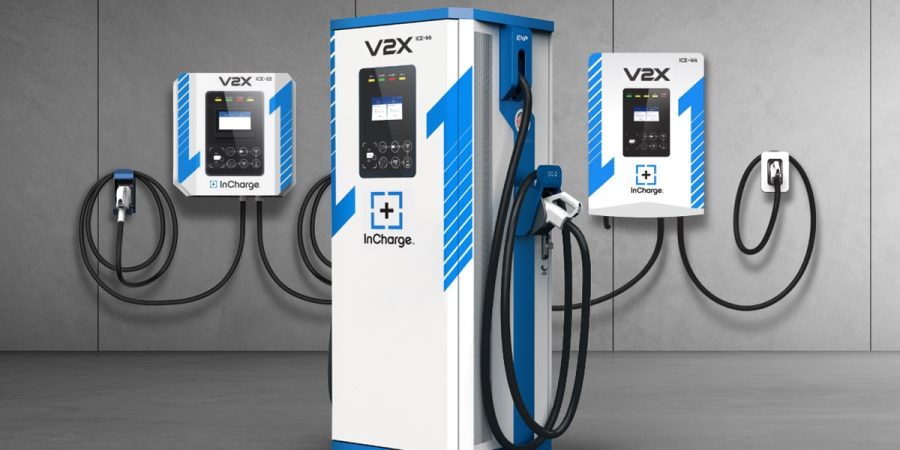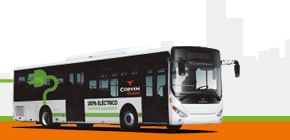InCharge Energy, a US provider of infrastructure in which ABB holds a majority stake, has launched a new DC charger range. The vehicle-to-everything (V2X) chargers target the fleet market and include three options.
The charger suite comprises the ICE-22 V2X, ICE-44 V2X and ICE-66 V2X models. InCharge says they all qualify for grant funds with a vehicle-to-grid (V2G) compatibility requirement. California, for example, will require EV charging stations to have bidirectional capability from 2027.
“Importantly, the V2X portfolio supports proposed California legislation which looks to establish goals for bidirectional charging in the state and would require new EVs sold in California as of 2027 to have bidirectional charging capability,” added Cliff Fietzek, CTO of InCharge Energy.
He would not go into much technical detail, though.
InCharge says its V2X chargers would “revolutionize the way fleets use and store energy” by integrating EV batteries into the local microgrid at a fleet depot. The company further considers V2X “a great option for fleets with long dwell times, time-of-use energy tariffs and facilities in outage-prone regions”.
Varying requirements with fleet size and location also inform the charger types. InCharge specifies the ICE-22 V2X as ideal for fleets needing sequential charging, such as those with long dwell times without time-of-use tariffs.
The model is also helpful in discharging multiple vehicles back-to-back. The ICE-44 V2X was designed to maximize charging with simultaneous and sequential charging or discharging of two cars at a time.
Lastly, fleets with high daily utilization may need to charge up quickly or provide energy back to a facility to shave utility costs, or grid strain may opt for the ICE-66 V2X, according to InCharge.
“Our hands-on experience has given us a deep understanding of our customers’ needs and the challenges they are working to solve as they transition to electric vehicles, which is why we developed these three ICE V2X charging solutions,” said Nikolas Runge, VP of Product and Services.
The new V2X capability is an add-on of InControl, the charging management system from InCharge Energy. Using an OpenAPI architecture developed specifically for large fleets; the proprietary InControl platform allows fleet managers to digitally operate, monitor and maintain their EV charging infrastructure, with the option to integrate it into their existing software systems.
Additionally, integrating vehicle telematics into InControl provides advanced scheduling features that optimize fleet vehicle uptime, so InCharge.
Headquartered in Santa Monica, California, InCharge Energy has additional operations in San Francisco, Michigan and Virginia. Swiss technology group ABB acquired a 60% stake in the US company in January 2022 after holding a ten-per-cent stake in InCharge Energy since 2020.
Commenting on the transacting at the time, InCharge CEO Cameron Funk said ABB was a “natural fit” for InCharge since most of their “turnkey solutions” already include ABB’s charging hardware.





















